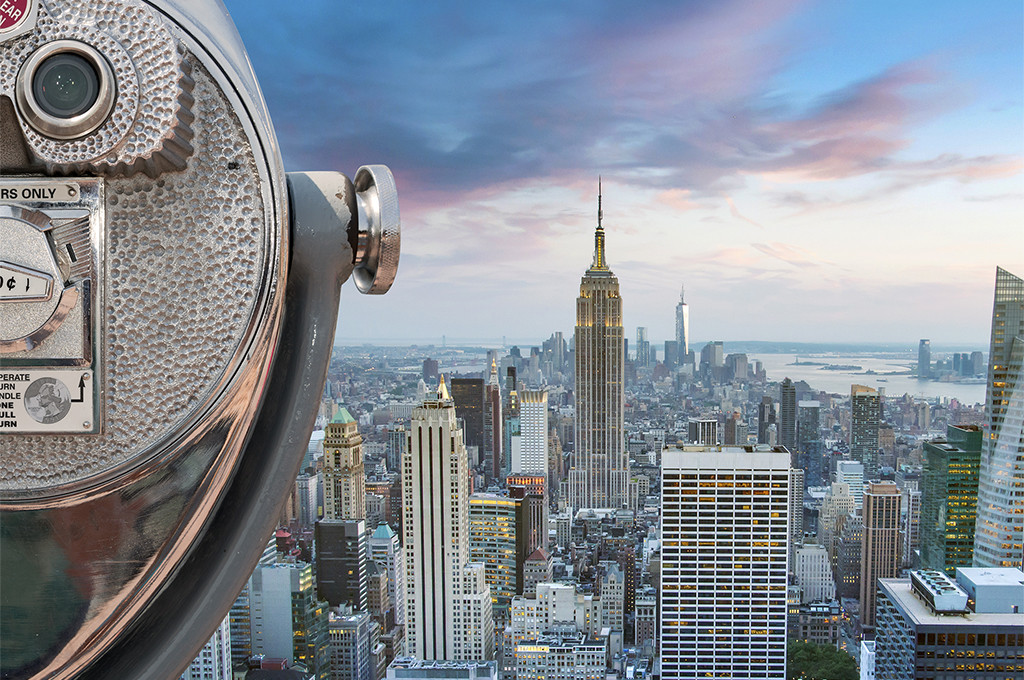This article was originally published in National Real Estate Investor Online.
With foreign capital flowing back into the U.S. commercial real estate market in a substantial way, we are taking a look at the longer-term view of factors that will impact the U.S. market as we continue in economic recovery mode. Here are five of the most significant that are in play now:
1. Foreign investors taking a longer-term, more informed view
As we enter a mature part of the real estate cycle, foreign investors are becoming more conservative with their commercial real estate investments in the U.S. This does not mean they are becoming less active in the United States — just the opposite, in fact. Many foreign investors are shifting from “yield”-driven to “capital preservation”-driven in their strategies by reducing debt leverage and taking a longer-term view toward investments. We have seen a willingness to pay a premium for trophy assets with long-term appeal — the Waldorf Astoria and Baccarat hotel transactions in New York are great examples.
Plus: Is foreign capital overheating the US property market? | Will the rise of megacities be our finest hour?
With more equity and a longer-term view, adverse impacts from interest rate changes or other negative market forces are less problematic. Many foreign investors are still looking at shorter-term opportunities such as new construction. They’re just doing it with more equity and underwriting exit strategies more conservatively.
More: Is the end of the recovery nigh? | What to make of the surging U.S. dollar
They are also operating with better information and local market expertise. Generally speaking, data affecting real estate investments today are much better and more readily available than in past cycles. This access to better data, combined with better local-market expertise, supports more prudent investments from foreign investors through all parts of the real estate cycle.
2. New markets getting hot
Along with that greater understanding of the market is an expanding appetite to invest outside of the usual core markets such as New York and San Francisco. We are seeing foreign investors get much more active in alternative markets such as Seattle, Boston, Washington, D.C., Chicago, Dallas, Denver and Atlanta. This is a function of the basic global challenge in today’s commercial real estate markets — way too much capital chasing way too few investment opportunities. However, whether it’s a core or alternative market, we are seeing foreign capital taking a similar longer-term view toward their investments.
3. Technology, lifestyle and jobs
Foreign capital is very keen on investing in commercial real estate markets that attract technology and biotechnology jobs. As a result, cities like Boston, Seattle and San Jose remain magnets for foreign investment. Other cities offering similar characteristics include San Diego, Salt Lake City, Washington, D.C., and Raleigh-Durham.
For example, in the case of Seattle, which was recently named by Forbes as the No. 1 city for technology jobs (12 percent tech job growth over the last two years), some investors theorize that its market is what the greater Bay Area was 10 years ago. But, when investors look at the relative pricing today between Seattle and the Bay Area, Seattle looks like a bargain. So, when we talk about foreign investment in U.S. real estate, the next decade will be dominated by cities that have these attributes. Still, New York will likely remain at the top for the foreseeable future.
4. The big unknowns: energy and interest rates
How will changes in the energy market affect commercial real estate investments? Just 120 days ago, the major Texas markets were part of every global investment discussion. However, the current price of oil and gas has raised some concerns about the impact on commercial real estate investments in these markets. Conversely, some have argued that reduced oil and gas prices will have only short-term effects, and this presents an excellent opportunity to buy in these markets. But if oil and gas prices continue as they are for the longer term, we will look for the implications for commercial real estate markets.
And then, interest rates: They come up in every discussion with foreign investors. While interest rates ultimately have a bearing on cap rates and commercial real estate values, too much emphasis has been placed on them for the near term. Even if the Federal Reserve raises rates this year, such a healthy gap between cap rates and interest rates remains that commercial real estate values are not going to be affected in the near term.
5. The only way is up
It is truly an exciting time in the U.S. for foreign capital in commercial real estate: All is trending upward. And with U.S. fundamentals looking ever stronger — particularly in light of the challenges facing some foreign markets today — there is one message that we are clearly receiving: The foreign market’s confidence in U.S. commercial real estate is growing for the long term. For evidence, look no further than the concurrent growth of capital invested.

 Colliers Insights Team
Colliers Insights Team

